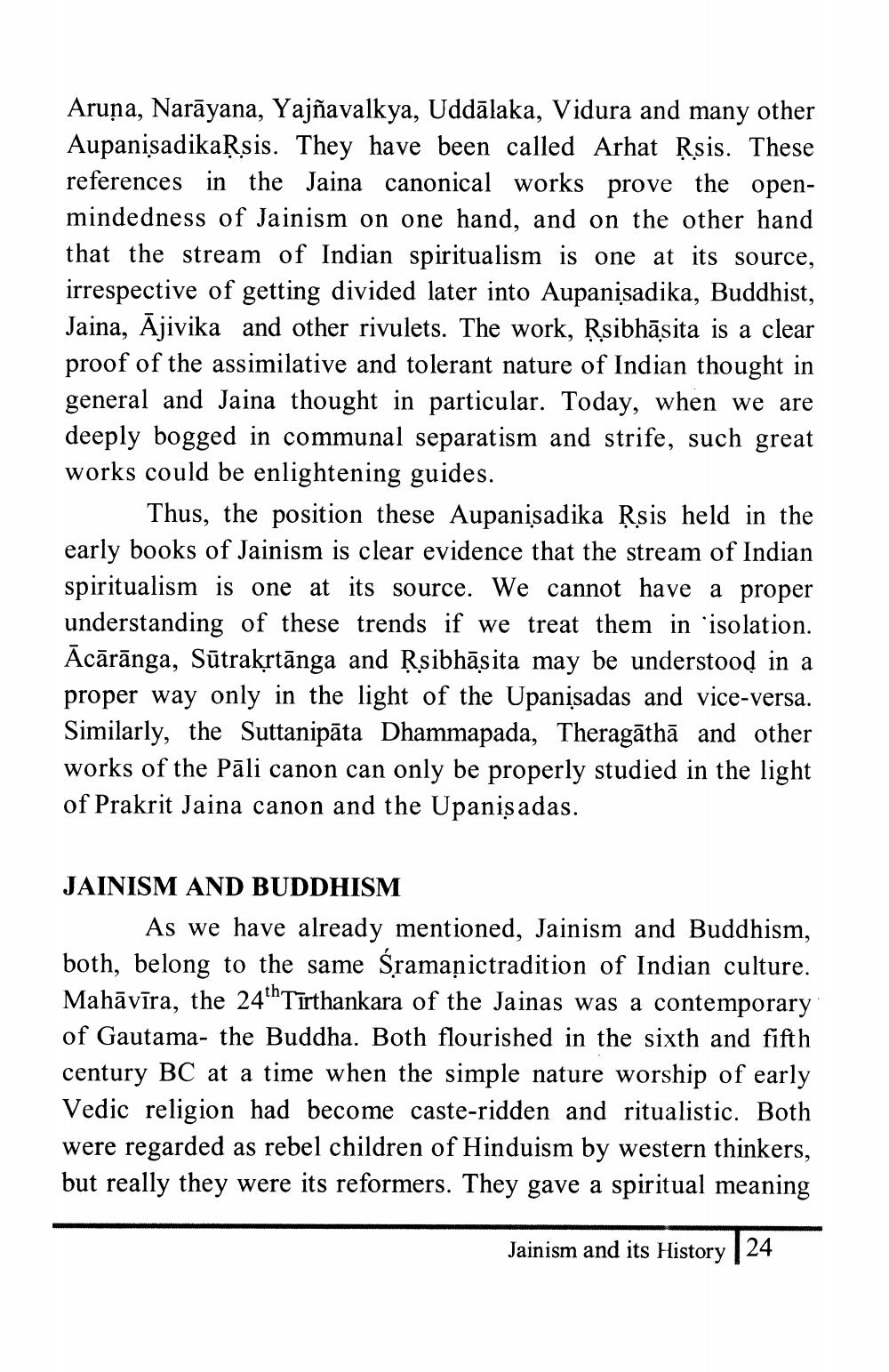________________
Aruṇa, Narāyana, Yajñavalkya, Uddālaka, Vidura and many other AupanisadikaṚsis. They have been called Arhat Rsis. These references in the Jaina canonical works prove the openmindedness of Jainism on one hand, and on the other hand that the stream of Indian spiritualism is one at its source, irrespective of getting divided later into Aupanisadika, Buddhist, Jaina, Ājivika and other rivulets. The work, Rsibhasita is a clear proof of the assimilative and tolerant nature of Indian thought in general and Jaina thought in particular. Today, when we are deeply bogged in communal separatism and strife, such great works could be enlightening guides.
Thus, the position these Aupanisadika Rsis held in the early books of Jainism is clear evidence that the stream of Indian spiritualism is one at its source. We cannot have a proper understanding of these trends if we treat them in isolation. Ācārānga, Sūtrakṛtānga and Ṛsibhāṣita may be understood in a proper way only in the light of the Upanisadas and vice-versa. Similarly, the Suttanipāta Dhammapada, Theragāthā and other works of the Pali canon can only be properly studied in the light of Prakrit Jaina canon and the Upanisadas.
JAINISM AND BUDDHISM
As we have already mentioned, Jainism and Buddhism, both, belong to the same Śramaṇictradition of Indian culture. Mahāvīra, the 24th Tirthankara of the Jainas was a contemporary of Gautama- the Buddha. Both flourished in the sixth and fifth century BC at a time when the simple nature worship of early Vedic religion had become caste-ridden and ritualistic. Both were regarded as rebel children of Hinduism by western thinkers, but really they were its reformers. They gave a spiritual meaning
Jainism and its History |24




